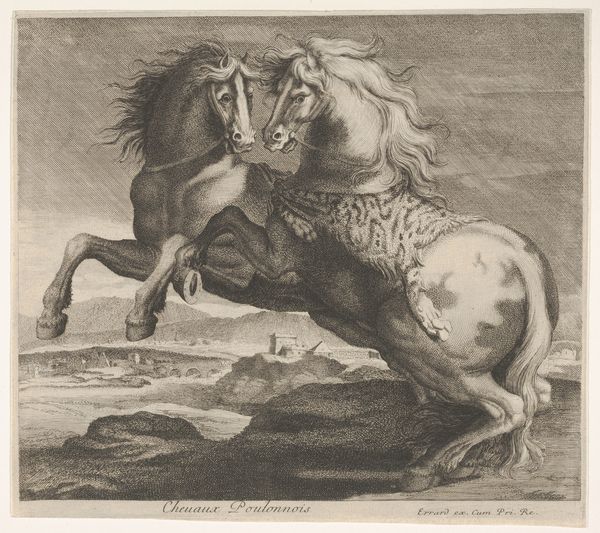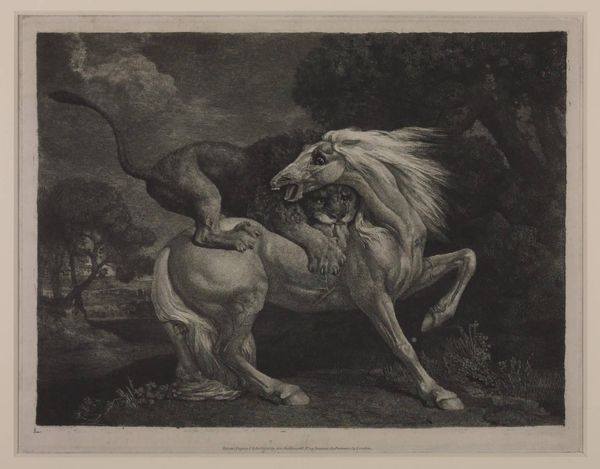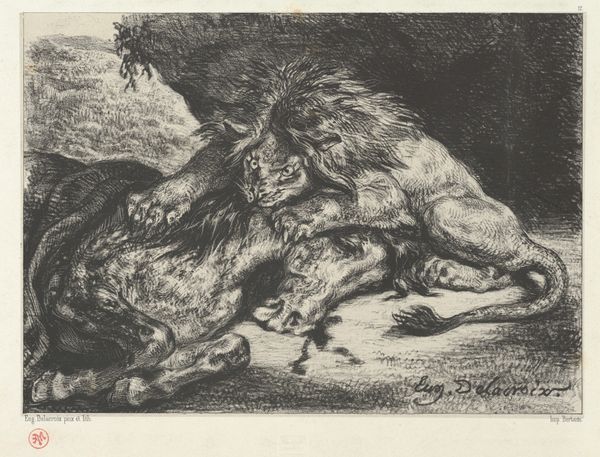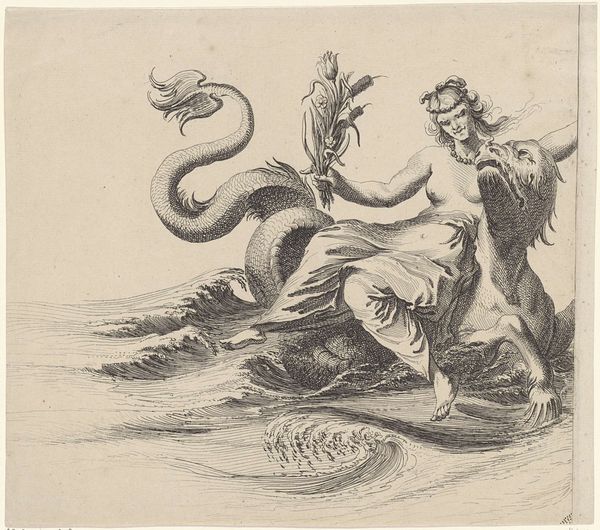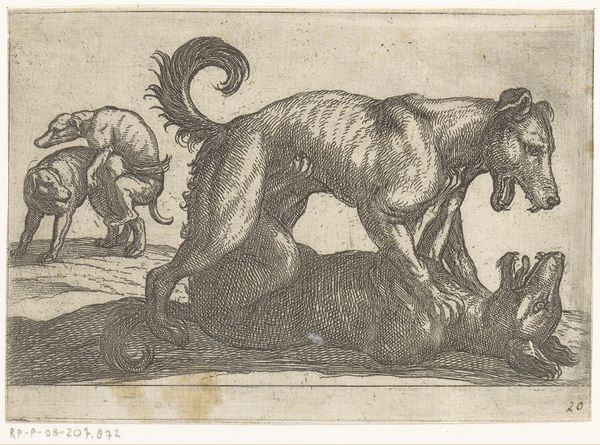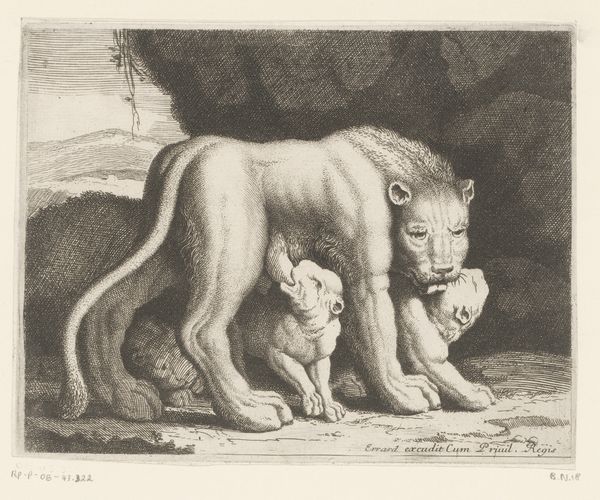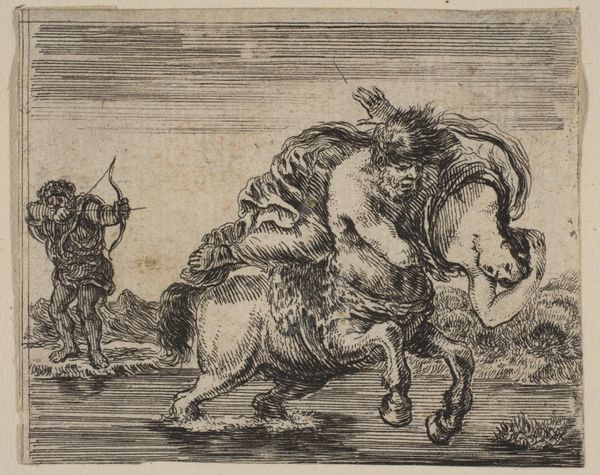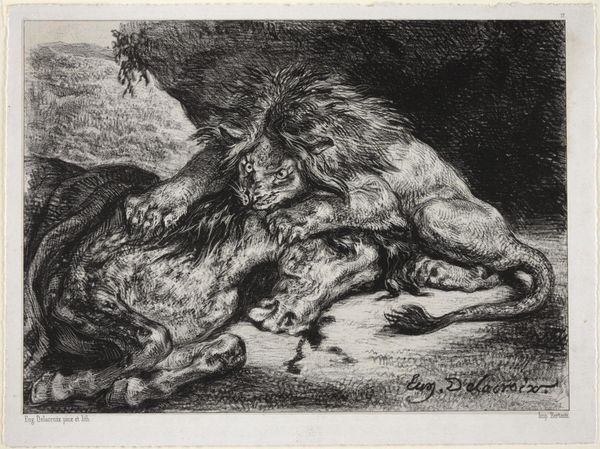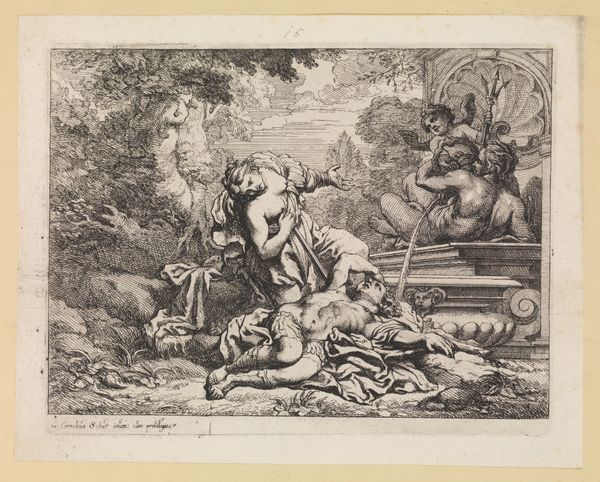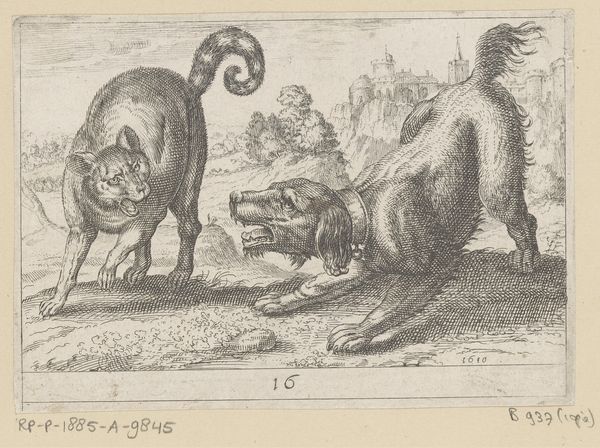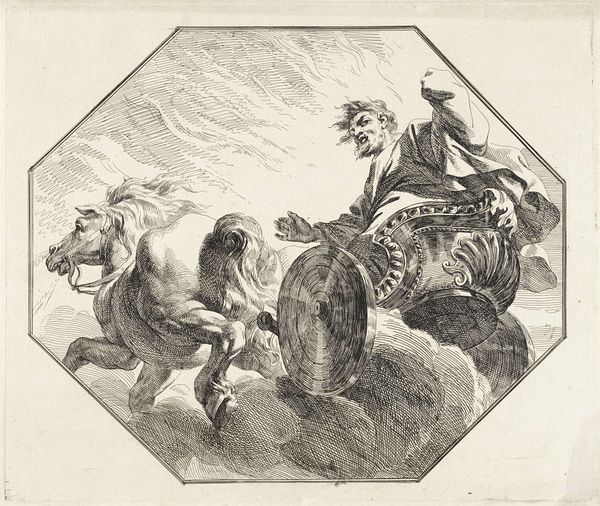
Conbat d'une Pantere et d'un Cheval 1606 - 1689
0:00
0:00
drawing, print, engraving
#
drawing
#
baroque
# print
#
figuration
#
history-painting
#
engraving
Dimensions: image: 8 1/8 x 9 5/16 in. (20.7 x 23.7 cm)
Copyright: Public Domain
Editor: This is "Combat d'une Pantere et d'un Cheval," made between 1606 and 1689 by Charles Errard le fils. It’s an engraving. It’s so dramatic! The tension is palpable. What stands out to you? Curator: Immediately, I consider the printmaking process itself. How does the physicality of engraving – the labor involved in cutting those lines into a metal plate – contribute to the representation of violence? The material resistance the artist faced mirrors the struggle depicted. Editor: That’s a perspective I hadn't considered. It looks like it was extremely detailed labor. Curator: Precisely. Think about the economy of printmaking at this time. Engravings were often commissioned reproductions. How does this image circulate, and to what audiences? Is this "high art," or something else entirely, meant for mass consumption? Consider, also, how the image's claim on realism depends on the skills involved with artisanal training. Editor: So, it's not just about the image, but the labor and social implications behind its creation and distribution? Curator: Exactly. Where was it made and what materials would be needed for production? How were those materials resourced, consumed, and potentially, even commodified? Consider what it costs to depict such violence and its appeal. What sort of labor underpinned the whole baroque period itself? Editor: It is fascinating to think of this image, made through skilled labor, circulated widely, potentially fueling a taste for the dramatic and violent. Thanks, this definitely gave me new questions to investigate and materials to consider. Curator: It is important to remember the cultural impact an artist can have when choosing and utilizing different materials to evoke specific sentiments and narratives, from both a maker and consumer’s point of view.
Comments
No comments
Be the first to comment and join the conversation on the ultimate creative platform.
